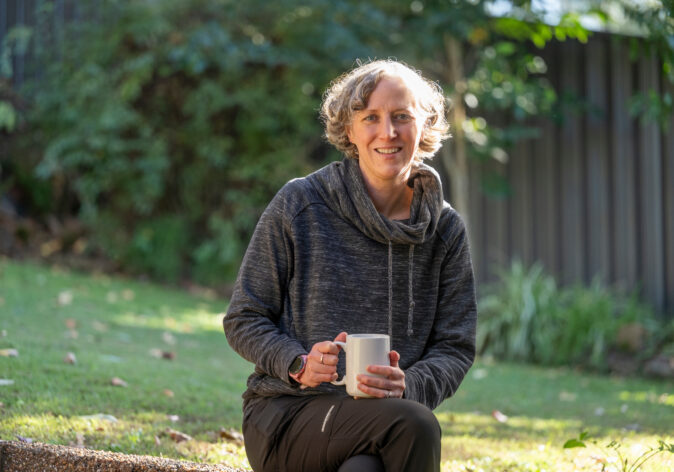What Is Partial Breast Irradiation?
Radiation therapy, also called radiotherapy, is a common breast cancer treatment used to kill cancer cells and shrink tumours.
However, for some women with breast cancer, studies have shown there is no increased benefit of whole breast irradiation. Instead, they could be eligible to have partial breast irradiation.
Professor Julia White, a tenured Professor of Radiation Oncology and Koltz Sisters Chair for Cancer
Research at The Ohio State University, said partial breast irradiation helps safely reduce treatment for some breast cancer patients.
“Partial breast irradiation is a de-escalation strategy.”
“Historically when breast conservation treatment started, the whole breast was treated.”
“So, instead of surgically removing the entire breast, you remove the cancer from the breast (a lumpectomy), and then irradiate the entire breast and that’s what made the treatment equivalent to breast removal or mastectomy.”
“But we learned over time that women who undergo a lumpectomy alone or lumpectomy plus breast radiotherapy, that the most common place for them to have an in-breast recurrence is around where the original tumour was in the breast,” said Professor White.
“So that really raises the question: do you need to treat the whole breast or can we just treat where most of the recurrence happens and that’s what partial breast irradiation is.”
Listen to the podcast
We spoke with Professor Julia White, a tenured Professor of Radiation Oncology and Koltz Sisters Chair for Cancer Research at the Ohio State University, about partial breast irradiation.
What Are The Different Types Of Partial Breast Irradiation?
Professor White said there are several different types of partial breast irradiation.
“Accelerated partial breast irradiation is where treatments, usually between five and ten treatments, are delivered in five to eight treatment days, either twice a day or once a day.”
“There’s inter-operative partial breast irradiation that’s done while the lumpectomy cavity is still open prior to closure.”
“And then there’s partial breast irradiation that’s done in a protracted (longer) fashion over three weeks, almost the same time scale as whole breast irradiation,” said Professor White.
“But our focus has really been on accelerated partial breast irradiation that reduces the course of treatment down to five to eight treatment days to reduce burden of care on patients.”
Who Is Best Suited For Partial Breast Irradiation?
Partial breast irradiation is not suitable for all breast cancer patients according to Professor White.
“Like all de-escalation, it’s really focused on luminal type breast cancers.”
“So those breast cancers that are hormone sensitive, lymph node negative, HER2 negative in women who are committed to taking their endocrine treatment for at least five years,” said Professor White.
According to Professor White, partial breast irradiation isn’t considered a ‘better’ treatment option for those patients. But a ‘non-inferior’ treatment option.
“Studies have shown that it’s non-inferior, meaning it will give comparable event rates,” said Professor White.
She said in her clinic at Ohio State University, around 20% of patients are undergoing accelerated partial breast irradiation.
“Particularity women who are still working, taking the time off daily for three to four weeks of radiation is burdensome.”
“They would rather come in and get it done in five days,” she said.
“It helps for women who live far away, they only need to find housing or lodging for about three days if we put the weekend in between and they can travel home on the weekend.”
“We really are catering to a niche group of women who want to keep their breasts, who want a low cancer event rate and who have hormone sensitive HER2 negative stage one breast cancer.”
Partial Breast Irradiation Clinical Trials Research?
Professor White advises that research is still ongoing into this de-escalated treatment.
“There have been several randomised clinical trials looking at the efficacy of accelerated partial breast irradiation, meaning the cancer recurrence rate is the same as with whole breast irradiation.”
“Those trials have all shown that a short course of radiation, in a population of women that are on average about 60 to 62 years old, post-menopausal and arepredominantly stage one hormone sensitive breast cancer, the likelihood of recurrence is very similar to whole breast irradiation. So, non-inferior.”
Professor White said a clinical trial ran at her institution studied partial breast irradiation for women in their mid-50s and younger who had grade three disease.
“We asked the question: can it replace whole breast irradiation and what we found is that partial breast irradiation was not equivalent to whole breast irradiation for that entire group of women undergoing breast conservation therapy.”
“So if you put those two studies together you come up with, I believe, a picture that tells you that partial breast irradiation is a good alternative to whole beast irradiation and will give you similar cancer recurrence rates in women who have hormone sensitive HER2 negative anatomic stage one breast cancer. So their lymph nodes are negative, and the tumour is less than 2cms and women are dedicated to taking their endocrine therapy for at least five years.”
“But that’s a large group of women. That’s probably 25-30% of women undergoing breast conservation.”
QUICK ACCESS
Support Us
Help us to change lives through breast cancer clinical trials research




